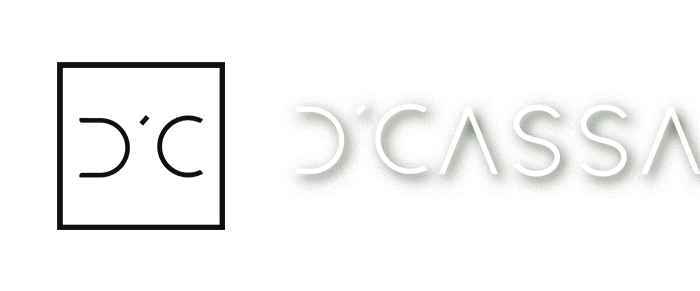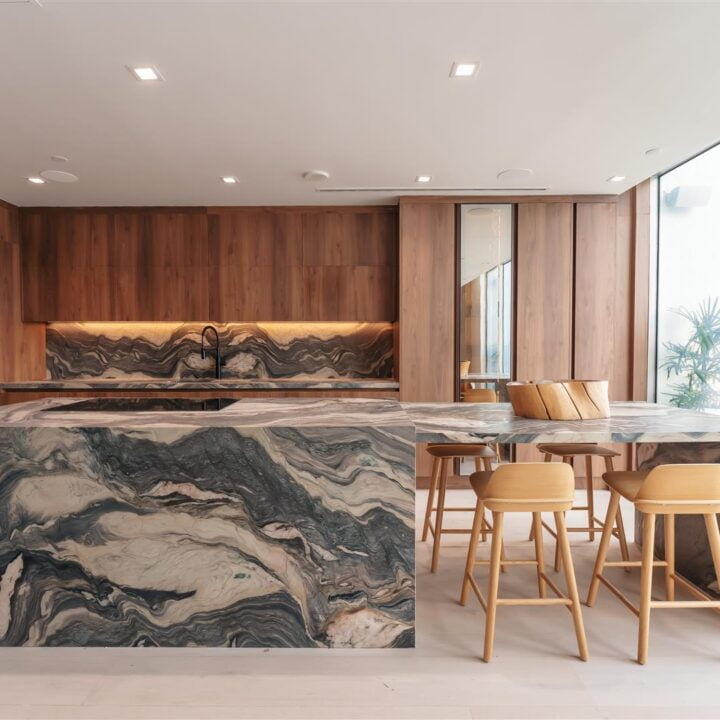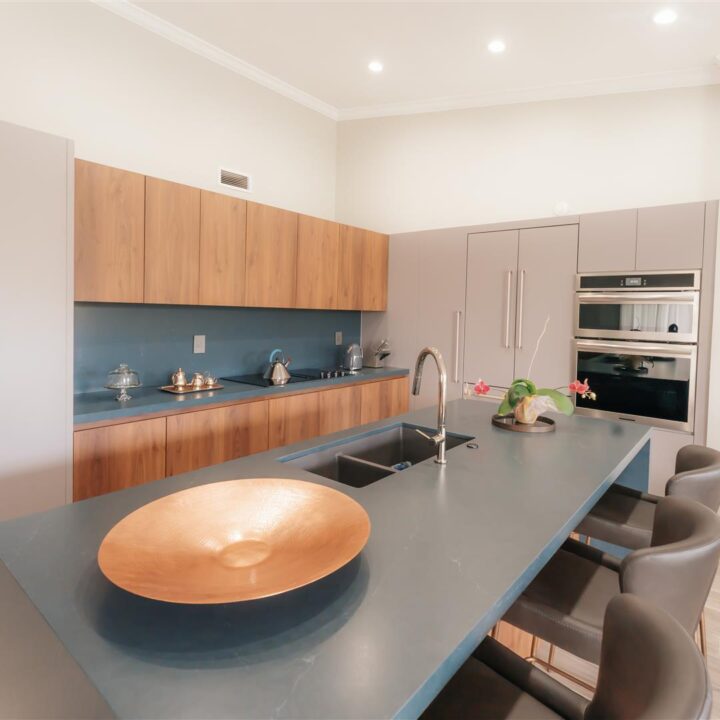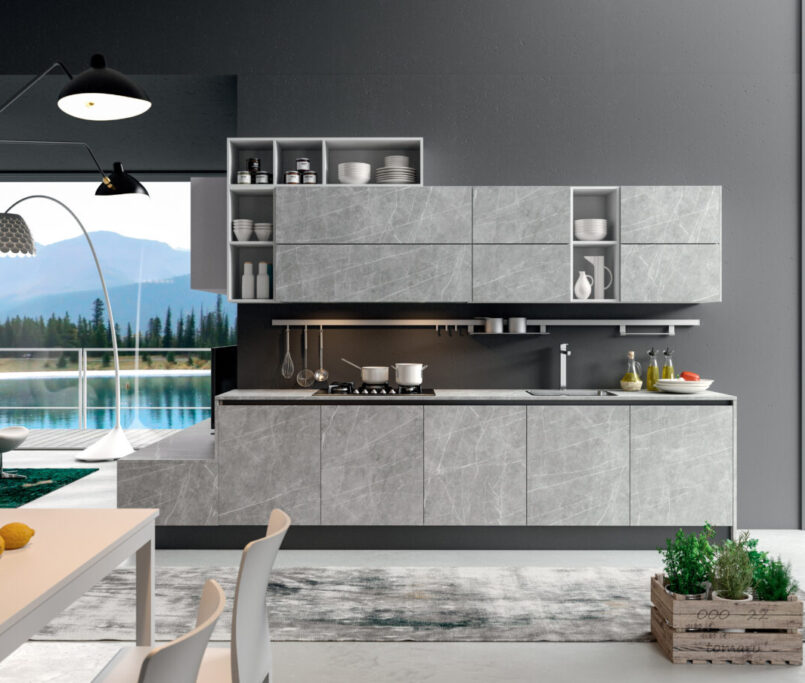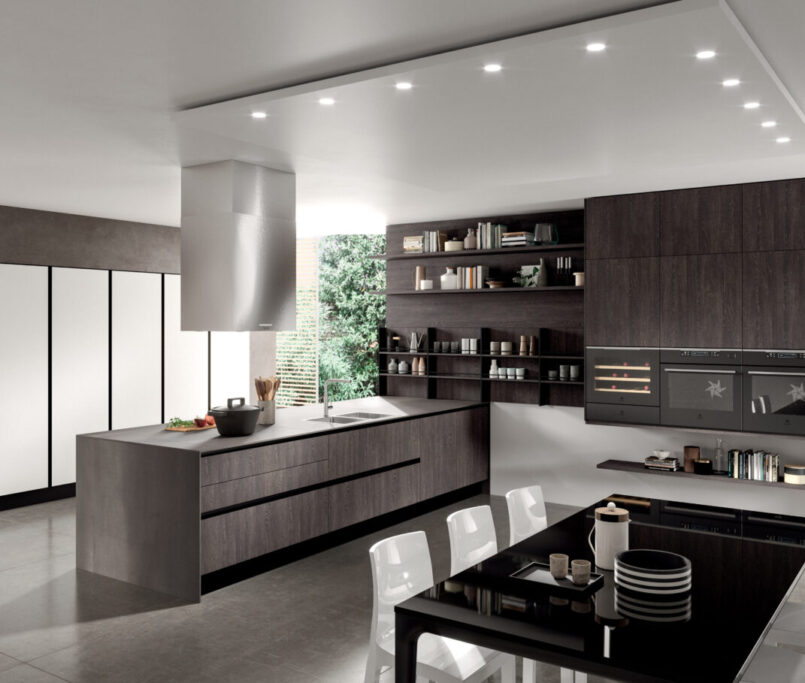Thinking about giving your kitchen a facelift? It’s a big job, but with some planning, it can totally change your space. Whether you’re dreaming of more storage, better appliances, or just a fresh look, a kitchen renovation can make it all happen. Let’s dive into some handy tips to keep things smooth and stress-free.
Key Takeaways
- Plan out your kitchen goals before you start. Know what you want and need.
- Set a budget and stick to it, but leave room for surprises.
- Choose a layout that fits your space and lifestyle.
- Pick materials and appliances that are both stylish and practical.
- Don’t forget about lighting and ventilation to keep your kitchen bright and fresh.
Setting Clear Goals for Your Kitchen Renovation

Identifying Your Needs and Priorities
Before jumping into a kitchen renovation, take a step back and think about what you really need. Is it more storage, better lighting, or maybe a complete style makeover? Nailing down your priorities will guide every decision you make. Make a list:
- More counter space for cooking
- Better organization for utensils and gadgets
- A cozy spot for family breakfast
These priorities will help you focus and avoid getting sidetracked by all the shiny new trends.
Balancing Aesthetics and Functionality
It’s easy to get caught up in making your kitchen look like those glossy magazine spreads. But remember, it also needs to work for you. Ask yourself: does this layout make cooking easier? Are the materials durable enough for everyday use? Functionality should never take a backseat to style.
Creating a Vision Board
A vision board isn’t just for Pinterest enthusiasts. It’s a practical tool that helps you visualize your dream kitchen. Gather images, colors, and materials that speak to you. Seeing everything together can reveal patterns in your taste and highlight what’s most important to you. This is your chance to dream big and explore a captivating realm of kitchen design that blends elegance with functionality, creating spaces that inspire and transform lives.
Taking the time to plan and set clear goals for your kitchen renovation can save you a lot of headaches down the road. It’s not just about picking pretty tiles or fancy appliances; it’s about creating a space that truly fits your lifestyle.
Budgeting Wisely for a Kitchen Makeover
Estimating Costs and Setting a Budget
When you’re planning a kitchen makeover, the first thing to tackle is your budget. Setting a realistic budget from the start is crucial because it guides every decision you make. Think about the big-ticket items first: cabinets, countertops, and appliances. Then, factor in labor costs. It’s smart to get multiple quotes from contractors to understand the going rate in your area. Don’t forget the little things, like fixtures and paint, which can add up quickly. A well-planned budget helps avoid any nasty surprises down the road.
Allocating Funds for Unexpected Expenses
You know how life throws curveballs? Well, renovations are no different. Set aside a contingency fund—about 10-15% of your total budget—for those unexpected hiccups. Maybe the plumbing needs more work than anticipated, or you find some structural issues once the walls come down. Having a financial cushion means you’re not scrambling to cover costs in the middle of your project.
Exploring Financing Options
If your savings aren’t enough to cover the renovation, don’t worry. There are several financing options to consider. Home equity loans and lines of credit can be good choices since they often have lower interest rates than credit cards. Just make sure you understand the terms and can comfortably manage the payments. It’s also worth checking if any local incentives or rebates are available for energy-efficient upgrades, which can help offset costs.
Choosing the Perfect Layout for Your Space
Understanding the Work Triangle
The work triangle is a tried-and-true concept in kitchen design. It connects the three main work areas: the stove, the sink, and the refrigerator. This triangle helps streamline your cooking process, making everything you need easily accessible. When planning your layout, aim for a triangle that isn’t too cramped or spread out. Ideally, the sides of the triangle should measure between 4 and 9 feet each. This balance ensures efficiency without making you feel like you’re running a marathon every time you cook.
Maximizing Space with Smart Design
Even if your kitchen is small, smart design can make it feel spacious. Consider using multi-functional furniture like a kitchen island with storage or a foldable dining table. Vertical storage is another space-saving trick. Install shelves or cabinets that reach up to the ceiling to use every inch wisely. Don’t forget to incorporate built-in appliances to maintain a sleek and cohesive look.
Incorporating Social Spaces
Kitchens are often the heart of the home, where family and friends gather. To make your kitchen more welcoming, think about creating a small seating area. A breakfast nook or a couple of bar stools at the counter can encourage socializing while cooking. If space allows, an open-plan layout that connects the kitchen to living areas can make entertaining more enjoyable. This setup not only enhances interaction but also makes the space feel larger and more connected to the rest of the home.
Designing the perfect kitchen layout is about more than just aesthetics. It’s about creating a space where functionality meets comfort, allowing you to cook, entertain, and relax with ease.
Selecting Materials and Finishes

Choosing the right materials and finishes for your kitchen can feel like a daunting task, but it doesn’t have to be. Here’s how to make choices that will stand the test of time.
Choosing Durable Countertops
When it comes to countertops, durability is key. Materials like quartz, granite, and elegant marble are popular for their resilience and timeless appeal. Quartz is particularly resistant to stains and scratches, making it a practical choice for busy kitchens. Granite offers a unique, natural look, while marble adds a touch of luxury. Consider how much maintenance you’re willing to do, as some surfaces require more care than others.
Exploring Cabinetry Options
Cabinetry is one of the most impactful elements in your kitchen’s design. From sleek, modern styles to classic, traditional looks, there’s a wide range of options to fit your personal taste. European-style cabinets offer a seamless, handle-free look, while traditional framed cabinets provide a more detailed appearance. Don’t forget to consider the material – solid wood, MDF, and plywood each have their pros and cons.
Picking the Right Flooring
Flooring needs to be both functional and stylish. Hardwood floors bring warmth and can be refinished multiple times, but they might not be suitable for high-moisture areas. On the other hand, tile is durable and easy to clean, though it can be cold and hard underfoot. For a middle ground, consider luxury vinyl planks, which mimic the look of wood or stone while being water-resistant and softer to walk on.
A well-chosen blend of materials and finishes not only enhances the kitchen’s aesthetic but also its functionality, creating a space that’s both beautiful and practical.
Incorporating Modern Appliances
Energy-Efficient Appliance Choices
When planning a kitchen renovation, consider appliances that save energy. Energy-efficient options not only reduce utility bills but also help the environment. Look for appliances with the Energy Star label, which indicates they meet strict energy efficiency guidelines. These appliances, like refrigerators and dishwashers, use less water and electricity, which is great for both your wallet and the planet.
Integrating Smart Technology
Smart technology is becoming a staple in modern kitchens. From smart ovens that can be controlled via smartphone to refrigerators that alert you when you’re out of milk, integrating these technologies can make your kitchen more efficient and convenient. Voice-activated assistants can help manage tasks hands-free, allowing for a seamless cooking experience.
Space-Saving Appliance Solutions
Incorporate appliances that maximize space, especially in smaller kitchens. Built-in ovens and microwaves can be hidden behind cabinet doors for a sleek look. Consider a panel-ready refrigerator that blends with your cabinetry, creating a cohesive design. Using multi-functional appliances, like a microwave-oven combo, can save space while adding versatility to your kitchen.
Maximizing Storage and Organization
Utilizing Vertical Space
When floor space is limited, look up! Vertical storage is a game-changer for small and large kitchens alike. By installing cabinets that stretch all the way to the ceiling, you can store those rarely used items up top and keep daily essentials within easy reach. Consider open shelving as well. It not only provides easy access but also makes the kitchen feel more open and airy. For a touch of elegance, think about custom cabinets with elegant moldings like those in a Miami Beach kitchen design, which can add both style and practicality.
Incorporating Pull-Out Shelves
Pull-out shelves are a smart solution to the problem of deep, hard-to-reach cabinets. They allow you to see and access everything without having to dig through layers of pots and pans. This feature can transform your kitchen’s efficiency and style, making it easier to organize your space. Imagine the convenience of having everything you need at your fingertips—no more forgotten cans or lost lids in the back of your pantry.
Designing Custom Cabinetry
Custom cabinetry is the ultimate way to ensure every inch of your kitchen is used effectively. Tailored solutions mean you can have drawers and cupboards that fit your specific needs, whether it’s a pull-out spice rack or a hidden nook for your baking sheets. Companies like D’Cassa specialize in creating bespoke kitchen designs that not only maximize storage but also enhance the overall aesthetic of your space. With their expertise, you can achieve a seamless and functional kitchen that meets all your needs.
Lighting and Ventilation Essentials
Layering Different Types of Lighting
Creating the perfect lighting setup in your kitchen is vital for both function and feel. A well-lit kitchen is not only more inviting but also safer. Start with ambient lighting to provide overall illumination. Think ceiling fixtures or recessed lights. Task lighting is next. It’s crucial for areas where you chop, cook, or read recipes, like under cabinets or above the island. Finally, accent lighting adds a touch of style. Use it to highlight artwork or architectural features. Install dimmers to control the mood and save energy.
Ensuring Proper Ventilation
Ventilation is often overlooked but it’s super important. A good quality range hood or ventilation system keeps your kitchen free from smoke, grease, and odors. This not only helps in maintaining a clean kitchen but also contributes to a healthier home. Consider a ducted range hood for the best performance, but if that’s not possible, a ductless one with a good filter is a decent alternative. Regular maintenance is key—clean or replace filters often to ensure efficiency.
Highlighting Key Areas with Accent Lighting
Accent lighting can transform your kitchen into a more dynamic space. Use it to draw attention to key areas or features like a custom renovated kitchen by D’Cassa, known for their exquisite designs. Think about strip lighting under cabinets, spotlights over open shelves, or pendant lights that make a statement over your dining area. This not only enhances the visual appeal but also adds depth and dimension to your kitchen’s design.
When planning your kitchen’s lighting and ventilation, remember that these elements are not just functional—they’re integral to your kitchen’s look and feel. Balancing the two can significantly elevate your cooking and dining experience.
Adding Personal Touches to Your Kitchen
Choosing a Color Palette
Selecting the right colors for your kitchen can completely change the vibe. Are you into bold, vibrant hues, or do you prefer subtle, calming shades? Color can set the mood, and it’s one of the easiest ways to add personality. Think about how different colors make you feel and what kind of energy you want in your kitchen. You might want to go for a classic white with pops of color or maybe a deep navy for something more dramatic.
Incorporating Unique Decor Elements
This is where you can really let your personality shine. Consider adding unique decor pieces like vintage signs, quirky salt and pepper shakers, or a collection of your favorite cookbooks. Decor elements not only make your kitchen feel more like you, but they also tell a story. You could hang some art or even create a small gallery wall with family photos or prints that you love.
Personalizing with Family Heirlooms
Family heirlooms bring a sense of history and warmth to your kitchen. Whether it’s your grandmother’s old mixing bowl or a set of antique silverware, these items can be both functional and decorative. Display them proudly on open shelves or use them in your daily cooking. They add a touch of nostalgia and make your kitchen uniquely yours.
Working with Professionals for a Seamless Renovation
Hiring the Right Contractor
When it comes to renovating your kitchen, hiring the right contractor can make all the difference. Start by asking friends and family for recommendations, then check online reviews to get a sense of their reputation. A good contractor should have a solid track record and be transparent about costs and timelines. Don’t hesitate to ask for references and take the time to visit past projects if possible. This will give you a real feel for their work quality. It’s also crucial to ensure they are licensed and insured to protect yourself from any liabilities.
Collaborating with Interior Designers
An interior designer can help bring your vision to life, ensuring that your kitchen is both functional and beautiful. They can assist in choosing the right materials, colors, and layouts that suit your taste and lifestyle. Working closely with a designer means you’ll have an expert eye to guide you through the myriad of choices, preventing costly mistakes. Be open about your budget and expectations from the start to ensure a smooth collaboration. Remember, their goal is to create a space that reflects your personality and meets your needs.
Understanding the Renovation Timeline
Renovation timelines can vary widely based on the scope of your project. A typical kitchen renovation might take anywhere from a few weeks to several months. It’s important to discuss this timeline with your contractor and designer to set realistic expectations. Keep in mind that factors such as supply chain issues or unexpected structural problems can impact the schedule. Stay in regular communication with your team to address any challenges promptly.
Renovating a kitchen is a significant undertaking, but with the right professionals by your side, it can be a rewarding experience. Their expertise not only ensures quality work but also gives you peace of mind throughout the process.
Sustainable and Eco-Friendly Renovation Tips
Using Recycled Materials
Making your kitchen more eco-friendly starts with the materials you choose. Reclaimed wood is a fantastic option for floors, cabinets, or even open shelves. It not only reduces deforestation but adds a unique character to your kitchen. You can also consider recycled glass or composite countertops. These materials divert waste from landfills and offer a stylish finish.
Incorporating Energy-Saving Features
When it comes to energy efficiency, think about lighting and appliances. Swapping out old bulbs for LED fixtures is a simple change that saves energy and lowers bills. For appliances, look for those with an ENERGY STAR rating. They use less power and often come with rebates or incentives. Induction cooktops are another great choice—they heat up quickly and are safer.
Choosing Low-VOC Paints
Paints and finishes can be a hidden source of indoor pollution. Opt for low-VOC (Volatile Organic Compounds) options to ensure better air quality in your home. These paints reduce harmful emissions, making your kitchen not only greener but healthier for your family.
Renovating with sustainability in mind isn’t just good for the planet—it’s a smart investment in your home’s future. By choosing eco-friendly materials and energy-efficient options, you’re creating a space that’s both beautiful and responsible.
For those seeking tailored solutions, D’Cassa offers custom kitchen designs that blend sustainability with luxury, perfect for those in Florida and the Caribbean.
Future-Proofing Your Kitchen Design
Incorporating Universal Design Principles
When renovating your kitchen, think about how it can serve you not just now, but in the future. Universal design is all about creating spaces that are accessible and functional for everyone, regardless of age or ability. Consider features like adjustable countertops, pull-out shelves, and lever-style handles that are easy to use. These elements not only make your kitchen more inclusive but also add a layer of convenience for everyday use.
Planning for Technological Advancements
Technology is always changing, and your kitchen should be ready to embrace these advancements. Consider wiring for smart appliances, installing USB outlets, and planning for future gadgets that might require more power or connectivity. Smart fridges, ovens you can control with your phone, and even voice-activated assistants can make cooking more efficient and fun. Keeping your kitchen tech-friendly ensures it stays up-to-date with the latest innovations.
Ensuring Adaptability for Lifestyle Changes
Life is unpredictable, and your kitchen should be able to adapt to whatever comes your way. Whether you’re planning for a growing family or anticipating a shift to remote work, flexibility is key. Think about modular furniture, which can be reconfigured as needed, or open shelving that can be adjusted to fit different items. A kitchen that can evolve with your lifestyle changes is one that truly stands the test of time.
Planning your kitchen with the future in mind might seem like a lot now, but it pays off in the long run. A little foresight can save you from costly renovations down the road and make your kitchen a welcoming space for years to come.
When planning your kitchen, think about the future! Choose designs and materials that will last and adapt to your needs. For more tips and ideas on how to create a kitchen that stands the test of time, visit our website today!
Wrapping Up Your Kitchen Renovation Journey
So, there you have it! Renovating your kitchen can seem like a huge task, but with the right planning and a bit of patience, it can be a rewarding experience. Remember to keep your goals clear and your budget realistic. Whether you’re adding more storage, updating the look, or making it more functional, every little change can make a big difference. Don’t rush the process—take your time to choose materials and designs that you’ll love for years to come. And hey, if things get a bit overwhelming, don’t hesitate to call in the pros. After all, your kitchen is the heart of your home, and it deserves to be just right. Happy renovating!
Frequently Asked Questions
What should I consider first when planning a kitchen renovation?
Start by figuring out what you really need and want in your kitchen. Think about how you use the space and what improvements would make it better for you.
How can I set a realistic budget for my kitchen renovation?
List all the things you need to buy or change, like materials and labor. Add a little extra money for surprises that might come up.
What is the work triangle in kitchen design?
The work triangle is a way to arrange the stove, fridge, and sink so they are close to each other, making it easier to move around the kitchen.
How do I choose the right materials for my kitchen?
Pick materials that are strong and easy to clean. Think about how they look and if they match your style.
What are some tips for saving space in a small kitchen?
Use tall cabinets, shelves, and multi-purpose furniture to save space. Also, choose appliances that fit well in your kitchen.
Why is good lighting important in a kitchen?
Good lighting helps you see better when cooking and makes the kitchen look nice and welcoming.
How can I make my kitchen renovation eco-friendly?
Use recycled materials, energy-saving appliances, and paints that are safe for the environment.
What should I know about working with a contractor?
Choose a contractor who understands what you want and has good reviews. Talk to them often to make sure everything goes as planned.
